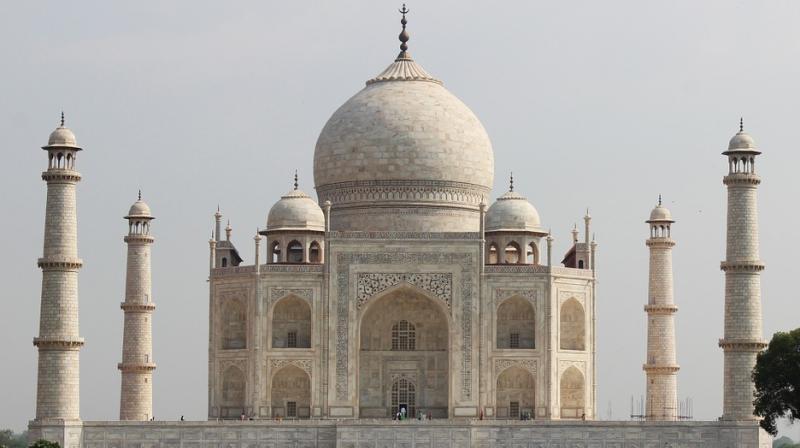New Delhi: The Supreme Court Tuesday extended till November 15 the time for Uttar Pradesh government to submit a vision document on protecting the Taj Mahal from pollution.
The state government told a bench headed by Justice Madan B Lokur that it would be difficult to declare entire Agra as a heritage city.
The top court asked the state government to consider declaring certain portions of the area surrounding the Taj Mahal as heritage.
The state government informed the court that an Ahmedabad-based Centre for Environmental Planning and Technology was assisting it on declaring areas surrounding the Taj Mahal as heritage.
The matter has been listed for further hearing November 29.
The apex court had earlier given time till October 15 to the state, but it was extended today after Additional Solicitor General (ASG) Tushar Mehta and advocate Aishwarya Bhati, representing the Uttar Pradesh government, sought an extension.
In the previous hearing, ASG A N S Nadkarni, appearing for the Centre, had said that it has communicated to the Uttar Pradesh government to send a proposal to declare Agra a ‘heritage city’.
He had said that the Archaeological Survey of India (ASI) was in the process of preparing a heritage plan for the Taj which would be filed with the UNESCO in three months.
The apex court had earlier asked the authorities to take a larger perspective on issues of pollution and green cover while preparing a vision document, saying that there will be no “second chance” to preserve the Taj Mahal.
The top court, while observing that the Taj Mahal would “of course be the centre piece” of the matters to be considered, had said other issues like vehicular traffic, pollution from the industries operating in the Taj Trapezium Zone (TTZ) and the water level of river Yamuna, should also be looked into while preparing the vision document.
The TTZ is an area of about 10,400 sq km spread over the districts of Agra, Firozabad, Mathura, Hathras and Etah in Uttar Pradesh and the Bharatpur district of Rajasthan.
“If the Taj Mahal goes once, you will not get a second chance,” a bench of Justices Madan B Lokur, S Abdul Nazeer and Deepak Gupta had told the project coordinator, who is involved in the process of preparing the vision document.
The state government had earlier said the School of Planning and Architecture in Delhi was preparing a vision document. Besides looking into issue of protection of the Taj Mahal, they were also considering a larger comprehensive plan to deal with all these issues.
Environmentalist M C Mehta, the petitioner in the case relating to the protection of the Taj Mahal, had told the court that green cover in the area has reduced and there were encroachments in and outside the Yamuna flood plains there.
He referred to the apex court’s 1996 order in the case and said several industries have come up in the area, with many of them operating beyond their capacity.
Mehta said as per the 1996 order, there were 511 industries in the area out of which the court had then said it would deal with 292 industries separately.
The bench, which has been monitoring development in the TTZ area to protect the Taj Mahal, had asked the petitioner to give his suggestions to the expert body within a week.
The top court had earlier slammed the Centre, Uttar Pradesh government and TTZ authority for their failure to restore the pristine glory of the Taj Mahal.
PTI
